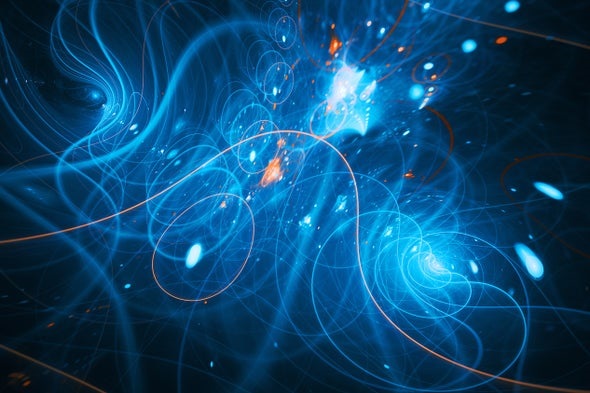Lawrence Livermore National Laboratory (LLNL) scientists have achieved a near 100 percent increase in the amount of antimatter created in the laboratory.
Using targets with micro-structures on the laser interface, the team shot a high-intensity laser through them and saw a 100 percent increase in the amount of antimatter (also known as positrons).
Previous research using a tiny gold sample created about 100 billion particles of antimatter. The new experiments double that.
“These successful experimental results are important for the Livermore positron project, whose grand goal is to make enough electron-positron antimatter to study the physics of gamma-ray bursts,” said Hui Chen, the project lead and a co-author of the paper. “But we found that the experiments also created a high energy (MeV) X-ray backlight that can penetrate very dense objects, which is important for many aspects of high energy density science.”
When enough energy is squeezed into a very small space, such as during high-energy particle collisions, particle-antiparticle pairs are produced spontaneously. When energy transforms into a mass, both matter and antimatter are created in equal amounts. In these experiments, intense laser-plasma interactions produce very high energy electrons whose energy, when interacting with the gold target, can generate electron-positron pairs.
The ability to create numerous positrons in a small laboratory opens the door to new avenues of anti-matter research, including an understanding of the physics underlying various astrophysical phenomena such as black holes and gamma-ray bursts as well as a pathway toward a dense electron-positron plasma in the laboratory.
“Adding front surface micro-structures to the typical gold target constitutes a cost-effective approach to substantially increase the positron yield while keeping the same laser conditions. It is one step further toward using laser-generated positron sources for a variety of applications,” said Jiang Sheng, the lead author of the paper.

